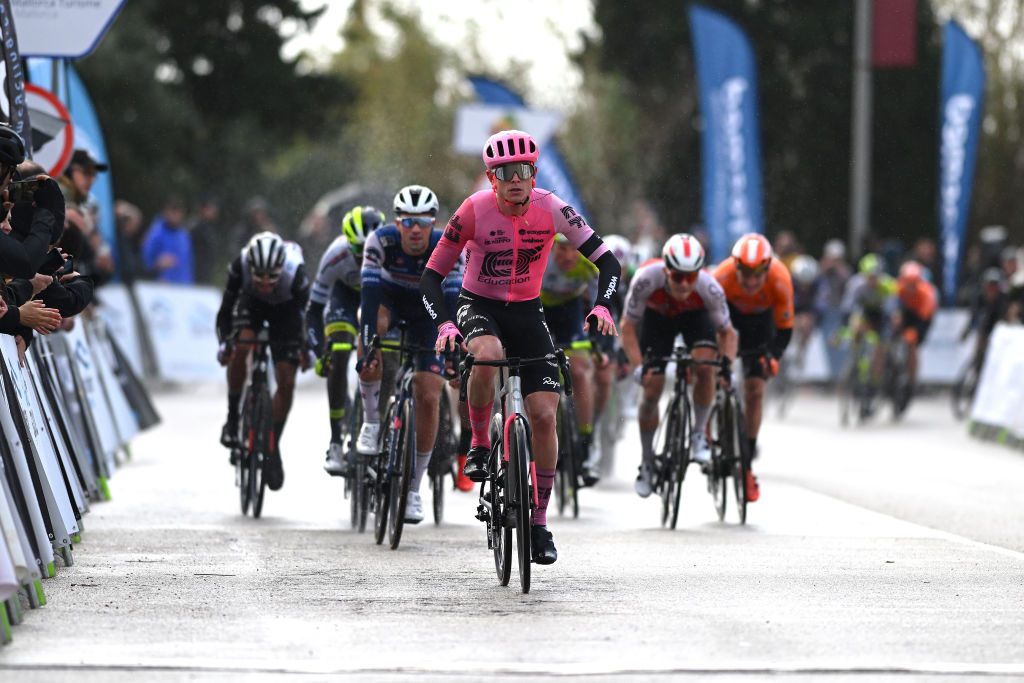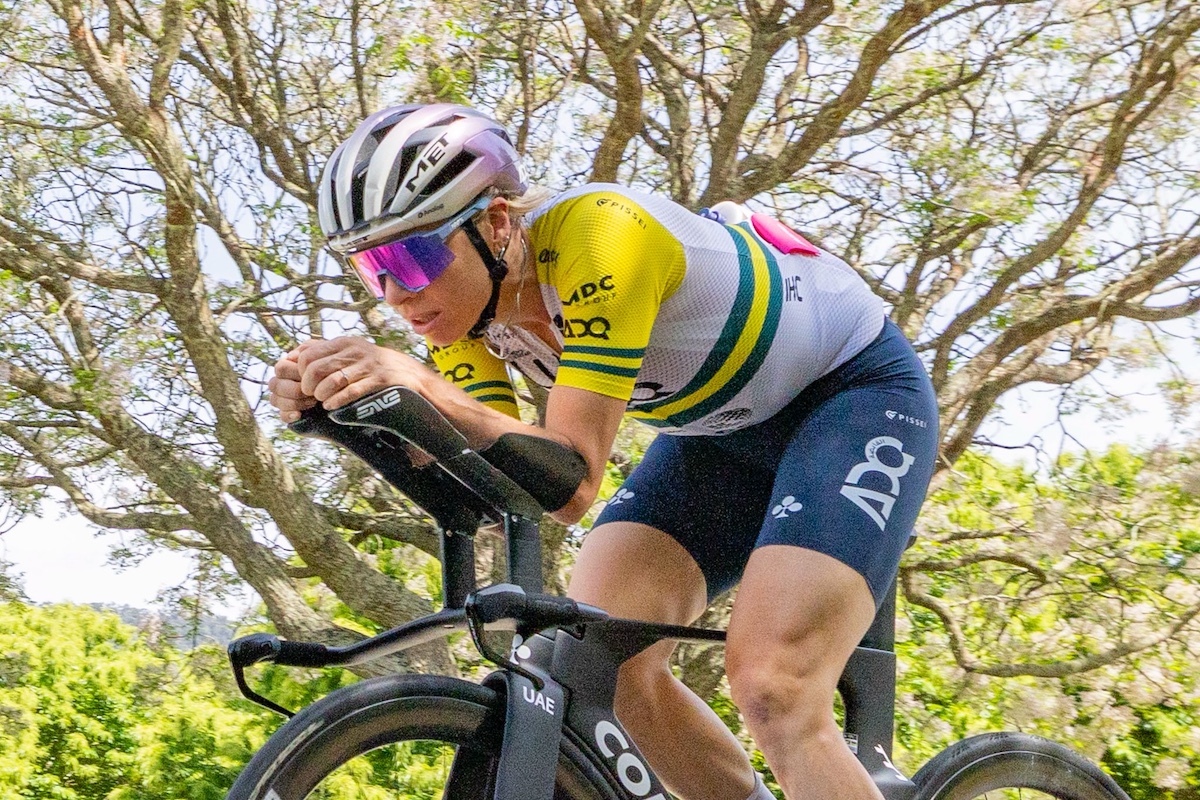A turn 50 metres from the line in Mallorca Challenge angers riders
Vernon says Trofeo Alcúdia finale was 'not a proper sprint'

The first races of the season, as Irishman Sam Bennett said this week, are always dangerous. Riders have been away from the peloton for months and are nervous and anxious to get a result. So when the organisers of the Mallorca Challenge opted to place the finish line 50 metres after a corner in Thursday's Trofeo Alcúdia, the only person pleased with the decision was winner Marijn van den Berg (EF Education-EasyPost).
The 23-year-old said using the corner was part of the team's strategy, saying he had to be first through the corner to win. But, with unusually rainy conditions, "I had to stay on the bike because it was a little slippery, and then the finish was there, and I knew I won, so it was nice."
Other riders interviewed by Antoine Plouvin of CyclingPro.net weren't so excited about the finale. The previous stage already saw several crashes in the rain-slicked hills, and the descent into Alcúdia was equally dicey, and most riders were clearly taking extreme caution.
Last year's winner Biniam Girmay, whose Intermarché-Circus-Wanty teammate Rui Costa won on Wednesday, said he didn't sprint before taking third.
"For the future, we don't need to see this corner - left right, left right, especially with this wet road. I didn't sprint."
Second-placed Ethan Vernon (Soudal-Quickstep) was more emphatic about the inappropriate corner. "I think it's a bit dangerous having a corner like this in the wet. With 50m to go, it's not a proper sprint. For sure if the line was a bit further I had the lines to win the sprint. The race was won by who had the most grip in the last corner, which is not the best for sprinting."
The issue is by no means new. Mario Cipollini famously crashed out of the 2003 Giro d'Italia in a similar corner on stage 11 while attempting to break the record for most career stage wins in the race.
The latest race content, interviews, features, reviews and expert buying guides, direct to your inbox!
The peloton started vigorously pushing back against organisers' inconsiderate course designs when riders were seriously injured in the Tour of the Basque Country in 2015 when the peloton ploughed into waist-high bollards demarking a parking space in the road in the final 500 metres of stage 1.
Riders formed unions to petition the UCI for safety measures, calling for inspections of the final 3km. But after Antoine Demoitié was killed in a collision with a race motorbike during Gent-Wevelgem in 2016, the UCI focused its updates on rules for the convoy but omitted the called-for course inspections.
The UCI later updated the guidelines and introduced 'safety managers' responsible for picking up problems with courses, but they come without immediate consequences. Riders, however, have been disqualified for adopting now-banned aero positions made illegal under the guise of safety.
The horrific crash of Fabio Jakobsen in the Tour de Pologne brought more attention to the design of the final kilometre, especially the final 200 metres. In his case, the barriers collapsed upon impact, exacerbating his injuries and causing several more riders to crash when pieces flew back into the path of their sprint.
The UCI then made more stringent requirements for the type of barriers that can be used and how they are fixed against wind or riders crashing. However, roads with poor surfaces, unsafe run-ins, and unprotected finishes are still being used in UCI-sanctioned races.
On Monday, Jakobsen pointed to the opening stage of the Vuelta a San Juan, where the peloton had to avoid parked cars and then navigate several splits in the road inside the final kilometre, and said he had a discussion with race organisers asking them to correct these problems.
Riders are demanding safer courses. Is anyone listening?

Laura Weislo has been with Cyclingnews since 2006 after making a switch from a career in science. As Managing Editor, she coordinates coverage for North American events and global news. As former elite-level road racer who dabbled in cyclo-cross and track, Laura has a passion for all three disciplines. When not working she likes to go camping and explore lesser traveled roads, paths and gravel tracks. Laura specialises in covering doping, anti-doping, UCI governance and performing data analysis.
